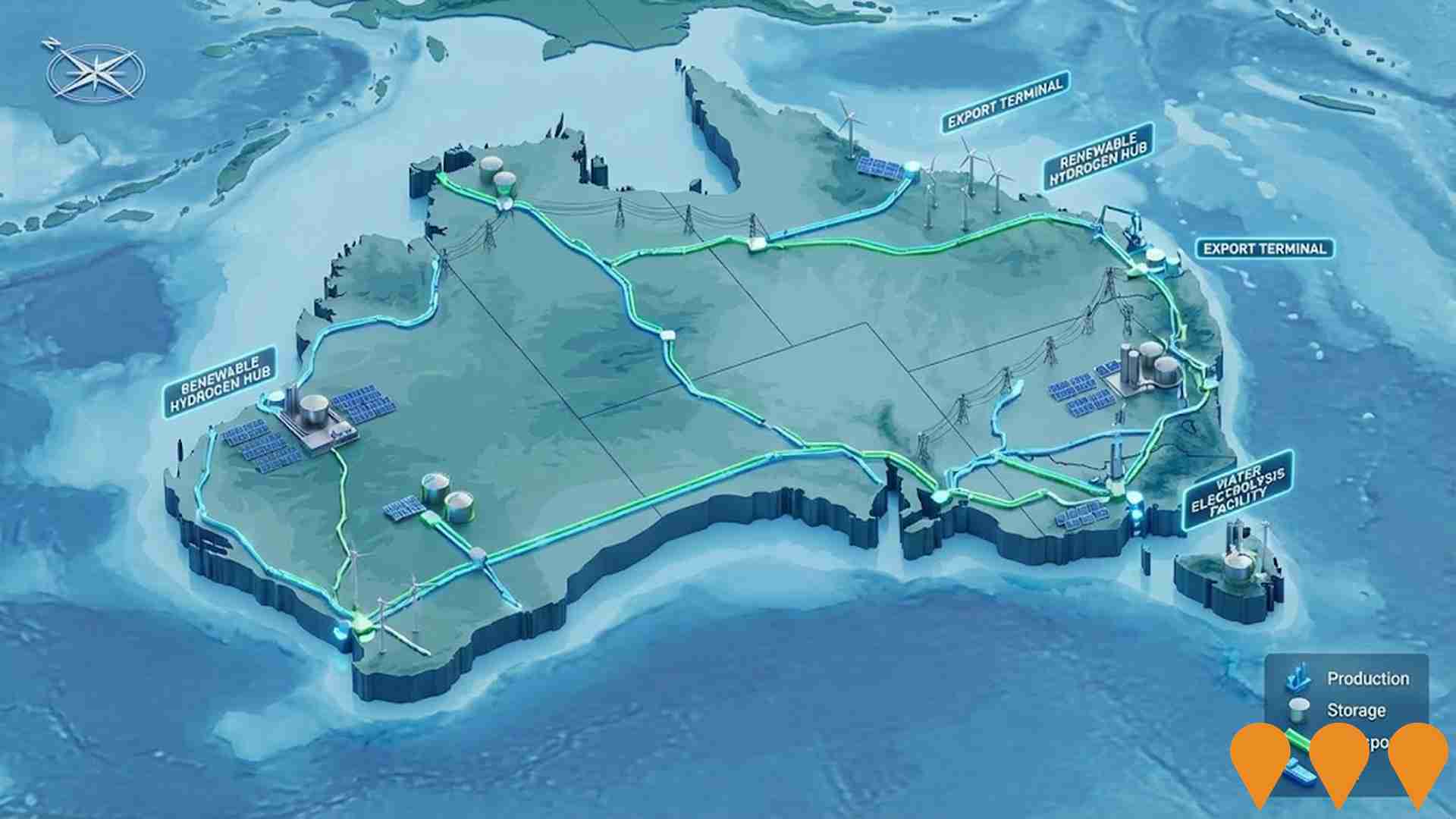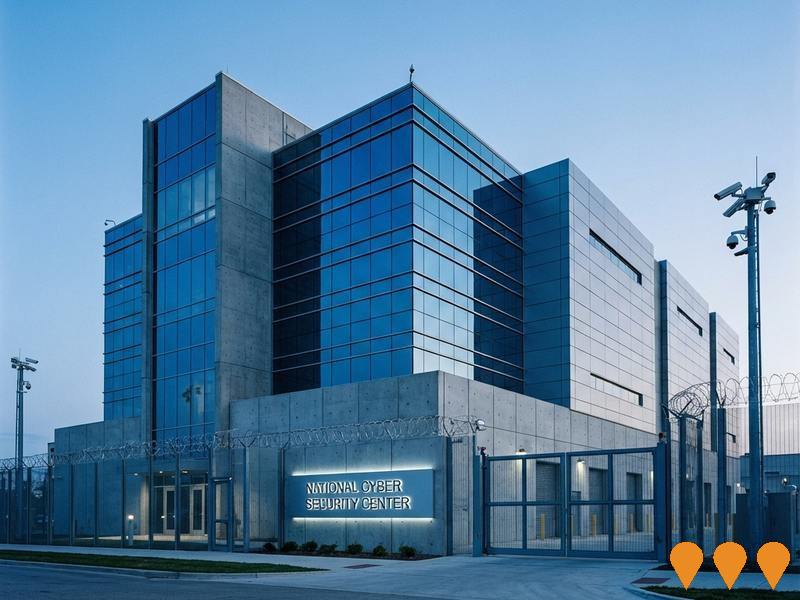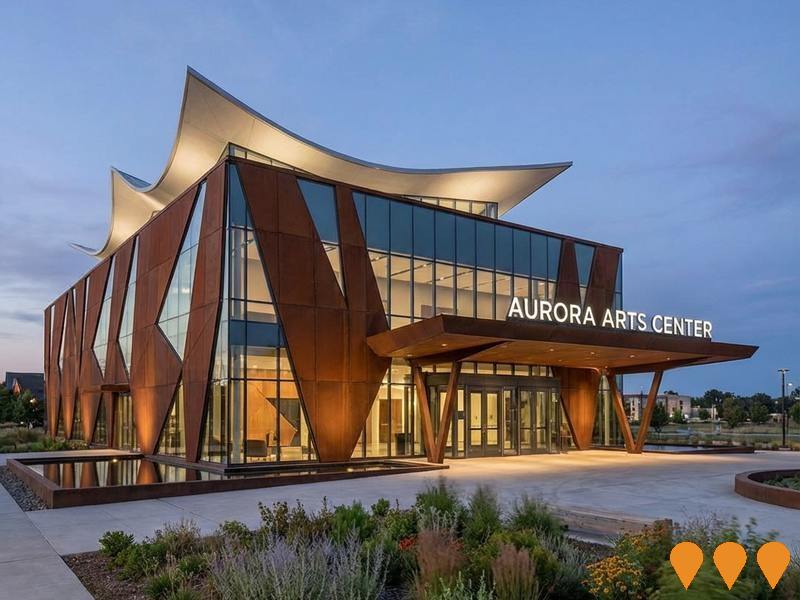Chart Color Schemes
est. as @ -- *
ABS ERP | -- people | --
2021 Census | -- people
Sales Activity
Curious about local property values? Filter the chart to assess the volume and appreciation (including resales) trends and regional comparisons, or scroll to the map below view this information at an individual property level.
Find a Recent Sale
Sales Detail
Population
APY Lands is positioned among the lower quartile of areas assessed nationally for population growth based on AreaSearch's assessment of recent, and medium term trends
Based on AreaSearch's analysis, APY Lands' population is around 2658 as of August 2025. This reflects an increase of 325 people (13.9%) since the 2021 Census, which reported a population of 2333 people. The change is inferred from the estimated resident population of 2654 from the ABS as of June 2024 and address validation since the Census date. This level of population equates to a density ratio of 0 persons per square kilometer, providing ample space per person. APY Lands' 13.9% growth since the 2021 census exceeded the SA3 area (4.1%) and the SA4 region, marking it as a growth leader in the region. Population growth for the area was primarily driven by interstate migration that contributed approximately 50.0% of overall population gains during recent periods, although all drivers including natural growth and overseas migration were positive factors.
AreaSearch is adopting ABS/Geoscience Australia projections for each SA2 area, as released in 2024 with 2022 as the base year. For any SA2 areas not covered by this data, and for years post-2032, the SA State Government's Regional/LGA projections by age category, released in 2023 and based on 2021 data, are adopted with adjustments made employing a method of weighted aggregation of population growth from LGA to SA2 levels. Anticipating future population dynamics, over this period, projections indicate a decline in overall population, with the area's population expected to reduce by 62 persons by 2041 according to this methodology. However, growth across specific age cohorts is anticipated, led by the 35 to 44 age group, which is projected to expand by 71 people.
Frequently Asked Questions - Population
Development
Residential development activity is lower than average in APY Lands according to AreaSearch's national comparison of local real estate markets
APY Lands has seen approximately four new homes approved annually over the past five financial years, totalling twenty homes. As of FY26, one approval has been recorded so far. On average, 7.4 new residents have been added per year for every home built between FY21 and FY25. This supply lagging demand suggests heightened buyer competition and pricing pressures.
In FY26, $6.2 million in commercial development approvals have been recorded, indicating the area's residential character. Compared to the rest of SA, APY Lands has moderately higher new home approvals, with 14.0% above the regional average per person over the five-year period. This maintains good buyer choice and supports existing property values, although recent development activity has moderated.
Nationally, this is under the average, suggesting the area's established nature and potential planning limitations. Recent building activity consists entirely of detached dwellings, maintaining APY Lands' traditional low density character with a focus on family homes. Given stable or declining population forecasts, APY Lands may experience less housing pressure, creating favourable conditions for buyers.
Frequently Asked Questions - Development
Infrastructure
APY Lands has emerging levels of nearby infrastructure activity, ranking in the 29thth percentile nationally
Changes in local infrastructure significantly impact an area's performance. AreaSearch has identified 20 projects that could affect the region. Notable projects include APY Lands Groundwater Quantity and Quality Investigation, Umuwa Multi-Agency Facility, Umuwa Central Power House Renewable Energy Upgrade, and Fregon Anangu School Upgrade. The following list details those most likely to be relevant.
Professional plan users can use the search below to filter and access additional projects.
INFRASTRUCTURE SEARCH
 Denotes AI-based impression for illustrative purposes only, not to be taken as definitive under any circumstances. Please follow links and conduct other investigations from the project's source for actual imagery. Developers and project owners wishing us to use original imagery please Contact Us and we will do so.
Denotes AI-based impression for illustrative purposes only, not to be taken as definitive under any circumstances. Please follow links and conduct other investigations from the project's source for actual imagery. Developers and project owners wishing us to use original imagery please Contact Us and we will do so.
Frequently Asked Questions - Infrastructure
Enabling Infrastructure for Hydrogen Production
Australia has completed the National Hydrogen Infrastructure Assessment (NHIA) to 2050 and refreshed its National Hydrogen Strategy (2024). The programmatic focus has shifted to planning and enabling infrastructure through measures such as ARENA's Hydrogen Headstart and the Hydrogen Production Tax Incentive (from April 2025). Round 2 of Hydrogen Headstart consultation occurred in 2025. Collectively these actions aim to coordinate investment in transport, storage, water and electricity inputs linked to Renewable Energy Zones and priority hubs, supporting large-scale renewable hydrogen production and future export supply chains.

National EV Charging Network (Highway Fast Charging)
Partnership between the Australian Government and NRMA to deliver a backbone EV fast charging network on national highways. Program funds and co-funds 117 DC fast charging sites at roughly 150 km intervals to connect all capital cities and regional routes, reducing range anxiety and supporting EV uptake.

Umuwa Central Power House Renewable Energy Upgrade
Upgrade of the Umuwa Central Power House on the APY Lands under South Australia's Remote Area Energy Supply (RAES) scheme. Works delivered a ground-mount solar PV system of approximately 2.42 MWp and a Battery Energy Storage System of about 1.56 MVA / 1.1 MWh integrated with the existing diesel plant via modern controls. The system is intended to supply around 4.4 GWh per year (about 40% of total demand) and reduce diesel use by roughly 1 million litres annually, improving reliability and cutting emissions across the RAES 33 kV network.

Network Optimisation Program - Roads
A national program concept focused on improving congestion and reliability on urban road networks by using low-cost operational measures and technology (e.g., signal timing, intersection treatments, incident management) to optimise existing capacity across major city corridors.

APY Lands Groundwater Quantity and Quality Investigation
Research and planning project to investigate groundwater quantity and quality across the APY Lands to identify sustainable water supplies for communities and local enterprises. Scope includes drilling, sampling and testing, hydrogeological assessment of newly identified aquifers near Kaltjiti, and community engagement to set water use priorities. Funded by the National Water Grid Fund with delivery led by the SA Department for Environment and Water.

APY Lands Main Access Road Upgrade
Upgrade of 210 km of the Main Access Road between the Stuart Highway and Pukatja (Ernabella) in the Anangu Pitjantjatjara Yankunytjatjara (APY) Lands, plus about 21 km of community and airstrip access roads serving Pukatja (Ernabella), Umuwa, Kaltjiti (Fregon), Mimili and Iwantja (Indulkana). The project improves safety, accessibility and delivery of services for APY communities. All upgrades on the 210 km Main Access Road were completed in December 2021.

Umuwa Multi-Agency Facility
Purpose-built multi-agency facility accommodating SA Police and child protection agencies. Features forensic interview capabilities, family breakout areas, communal agency areas and improved technology connectivity. Designed to improve community safety and child protection outcomes through enhanced inter-agency collaboration.

Fregon Anangu School Upgrade
Fregon Anangu School is undergoing a facility upgrade. Construction of a new Primary School building and Secondary School buildings including covered outdoor areas with general learning areas, withdrawal spaces, breakout spaces and amenities. The upgrade includes new construction providing administration spaces, primary and secondary learning areas, food technology and canteen; refurbishment of the library resource and general teaching to provide a new art space; refurbishment of the gymnasium amenities; a vehicle storage shed; a new covered outdoor learning area (COLA) and external works; and demolition of ageing infrastructure.

Employment
Employment conditions in APY Lands face significant challenges, ranking among the bottom 10% of areas assessed nationally
APY Lands has a diverse workforce comprising white and blue collar jobs, with significant representation in essential services sectors. The unemployment rate here is 41.0%.
As of June 2025550 residents are employed while the unemployment rate stands at 36.4%, which is higher than Rest of SA's rate of 4.6%. Workforce participation in APY Lands is lower at 41.7% compared to Rest of SA's 54.1%. Key industries for employment among locals include education & training, health care & social assistance, and arts & recreation. Notably, education & training employs 3.9 times the regional average.
Conversely, agriculture, forestry & fishing employs just 3.1% of local workers, lower than Rest of SA's 14.5%. The area may have limited local employment opportunities as seen in the difference between Census working population and resident population. Over a 12-month period ending May 2025, labour force increased by 6.3%, while employment declined by 16.4%, leading to a rise in unemployment rate by 16.0 percentage points. In contrast, Rest of SA saw employment fall by 1.2%, labour force expand by 0.1%, and unemployment rise by 1.2 percentage points. National employment forecasts from Jobs and Skills Australia, released May 2025, project national employment growth at 6.6% over five years and 13.7% over ten years. Applying these projections to APY Lands' employment mix suggests local growth of approximately 6.3% over five years and 13.4% over ten years.
Frequently Asked Questions - Employment
Income
Income metrics place the area in the bottom 10% of locations nationally according to AreaSearch analysis
APY Lands had a median taxpayer income of $25,535 and an average of $32,592 in financial year 2022. This was lower than the national average, with Rest of SA having a median income of $46,889 and an average income of $56,582 during the same period. By September 2025, estimates suggest the median income would be approximately $28,811 and the average around $36,774, based on a 12.83% growth in wages since financial year 2022. According to the 2021 Census, household income ranked at the 18th percentile with weekly earnings of $1,266, while personal income was at the 1st percentile. Income analysis showed that 32.2% of locals (855 people) fell into the $800 - $1,499 income category, unlike surrounding regions where the $1,500 - $2,999 bracket dominated with 27.5%. Despite modest housing costs allowing for 93.5% income retention, total disposable income ranked at just the 29th percentile nationally.
Frequently Asked Questions - Income
Housing
APY Lands is characterized by a predominantly suburban housing profile, with a higher proportion of rental properties than the broader region
The latest Census revealed that within APY Lands, 91.1% of dwellings were houses, with the remaining 9.0% being semi-detached, apartments, or other types. In comparison, Non-Metro SA had 85.7% houses and 14.3% other dwellings. Home ownership in APY Lands was at 2.3%, with mortgaged dwellings at 0.0% and rented ones at 97.7%. The median monthly mortgage repayment in the area was $0, while the median weekly rent figure was $85. In contrast, Non-Metro SA had average mortgage repayments of $1,863 and rents of $375 nationally.
Frequently Asked Questions - Housing
Household Composition
APY Lands features high concentrations of family households, with a higher-than-average median household size
Family households constitute 80.0% of all households, including 35.2% couples with children, 17.3% couples without children, and 20.2% single parent families. Non-family households comprise the remaining 20.0%, with lone person households at 17.5% and group households making up 2.9%. The median household size is 4.0 people, larger than the Rest of SA average of 2.4.
Frequently Asked Questions - Households
Local Schools & Education
APY Lands faces educational challenges, with performance metrics placing it in the bottom quartile of areas assessed nationally
The area's university qualification rate is 13.0%, significantly lower than Australia's average of 30.4%. Bachelor degrees are most common at 9.2%, followed by postgraduate qualifications (2.6%) and graduate diplomas (1.2%). Vocational pathways account for 19.1% of qualifications among those aged 15+, with advanced diplomas at 3.2% and certificates at 15.9%. Educational participation is high, with 28.8% of residents currently enrolled in formal education: 14.7% in primary, 7.6% in secondary, and 1.0% in tertiary education.
There are 8 schools operating within the area, educating approximately 556 students, all offering integrated K-12 education for academic continuity. School capacity exceeds local needs at 20.9 places per 100 residents compared to the regional average of 15.4, indicating the area serves as an educational hub for the broader region.
Frequently Asked Questions - Education
Schools Detail
Nearby Services & Amenities
Transport
No public transport data available for this catchment area.
Frequently Asked Questions - Transport
Transport Stops Detail
Health
APY Lands's residents boast exceedingly positive health performance metrics with both young and old age cohorts seeing low prevalence of common health conditions
Health outcomes data shows excellent results across APY Lands. Both younger and older age groups have a low prevalence of common health conditions. The rate of private health cover is very low at approximately 44% of the total population, which totals around 1,180 people.
This compares to 53.1% in the rest of South Australia (Rest of SA). Nationally, the average is 55.3%. Diabetes and asthma are the most common medical conditions in the area, affecting 9.5% and 4.6% of residents respectively. A total of 78.6% of residents report having no medical ailments, compared to 68.2% in Rest of SA. The area has 4.6% of residents aged 65 and over, which is 122 people, lower than the 16.3% in Rest of SA. Despite this, health outcomes among seniors require more attention than the broader population.
Frequently Asked Questions - Health
Cultural Diversity
The level of cultural diversity witnessed in APY Lands was found to be above average when compared nationally for a number of language and cultural background related metrics
APY Lands had a higher cultural diversity with 2.7% of its population born overseas and 88.5% speaking a language other than English at home. Christianity was the predominant religion, accounting for 53.7% of people in APY Lands. The category 'Other' comprised 9.4%, significantly higher than the Rest of SA average of 1.9%.
Regarding ancestry, Australian Aboriginal was the most represented group at 85.1%, substantially higher than the regional average of 17.2%. English ancestry made up 3.7%, notably lower than the regional average of 25.2%. Australian ancestry constituted 3.6%, also notably lower than the regional average of 28.5%.
Frequently Asked Questions - Diversity
Age
APY Lands hosts a very young demographic, ranking in the bottom 10% of areas nationwide
The median age in APY Lands is 28 years, which is notably lower than the average for Rest of SA at 47 years and also substantially lower than the Australian median of 38 years. Relative to Rest of SA, APY Lands has a higher concentration of residents aged 25-34 years (22.1%) but fewer residents aged 65-74 years (3.4%). This concentration of residents aged 25-34 is well above the national average of 14.5%. Between the 2021 Census and the present, the age group of 25 to 34 has grown from 20.4% to 22.1% of the population, while the age group of 35 to 44 has increased from 12.9% to 14.2%. Conversely, the age group of 0 to 4 has declined from 8.4% to 6.0%, and the age group of 15 to 24 has dropped from 18.8% to 16.8%. By the year 2041, APY Lands is expected to see notable shifts in its age composition, with the leading demographic shift being an increase of 20% (74 people) in the age group of 35 to 44 years, bringing it from 377 to 452. Meanwhile, both the age groups of 65 to 74 and 25 to 34 are expected to see reduced numbers.




